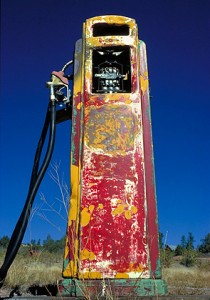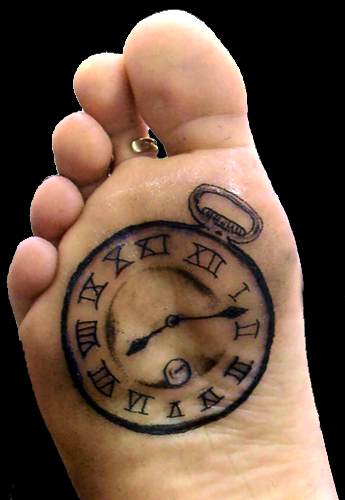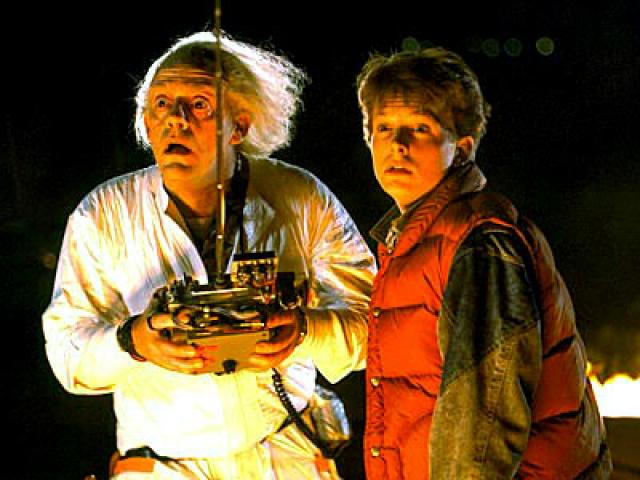Time To Think
 We live in a strange time where activity equals progress and thinking does not. Thinking is considered inactivity – wasteful, non-productive, worse than sleeping. (At least napping at your desk recharges the battery.) In today’s world there is little tolerance for thinking.
We live in a strange time where activity equals progress and thinking does not. Thinking is considered inactivity – wasteful, non-productive, worse than sleeping. (At least napping at your desk recharges the battery.) In today’s world there is little tolerance for thinking.
For those that think regularly – or have thought once or twice over the last year – we know thinking is important. If we stop and think, everyone thinks thinking is important. It’s just that we’re too busy to stop and think.
It’s difficult to quantify how bad things are – especially if we’re to compare across industries and continents. Sure it’s easy (and demoralizing) to count the hours spent in meetings or the time spent wasting time with email. But they don’t fully capture a company’s intolerance to thinking. We need a tolerance metric and standardized protocol to measure it.
I’ve invented the Thinking Tolerance Metric, TTM, and a way to measure it. Here’s the protocol: On Monday morning – at your regular start time – find a quiet spot and think. (Your quiet spot can be home, work, a coffee shop, or outside.) No smart phone, no wireless, no meetings. Don’t talk to anyone. Start the clock and start thinking. Think all day.
The clock stops when you receive an email from your boss stating that someone complained about your lack of activity. At the end of the first day, turn on your email and look for the complaint. If it’s there, use the time stamp to calculate TTM using Formula 1:
a
TTM = Time stamp of first complaint – regular start time. [1]
a
If TTM is measured in seconds or minutes, that’s bad. If it’s an hour or two, that’s normal.
If there is no complaint for the entire day, repeat the protocol on day two. Go back to your quiet spot and think. At the end of day two, check for the complaint. Repeat until you get one. Calculate TTM using Formula 1.
Once calculated, send me your data by including it in a comment to this post. I will compile the data and publish it in a follow-on post. (Please remember to include your industry and continent.)
Out Of Gas
 You know you’re out of gas when:
You know you’re out of gas when:
- You answer email punctually instead of doing work.
- You trade short term bliss for long term misery.
- You accept an impossible deadline.
- You sit through witless meetings.
- You comply with groupthink.
- You condone bad behavior.
- You placate your boss.
- You write a short post with a bulletized list — because it’s easier.
Amplify The Social Benefits of Your Products
To do g ood for the planet and make lots of money (or the other way around), I think companies should shift from an economic framework to a social one. Green products are a good example. Facts are facts: today, as we define cost, green products cost more; burning fossil fuel is the lowest cost way to produce electricity and move stuff around (people, products, raw material). Green products are more expensive and do less, yet they sell. But the economic benefits don’t sell, the social ones do. Lower performance and higher costs of green products should be viewed not as weaknesses, but as strengths.
ood for the planet and make lots of money (or the other way around), I think companies should shift from an economic framework to a social one. Green products are a good example. Facts are facts: today, as we define cost, green products cost more; burning fossil fuel is the lowest cost way to produce electricity and move stuff around (people, products, raw material). Green products are more expensive and do less, yet they sell. But the economic benefits don’t sell, the social ones do. Lower performance and higher costs of green products should be viewed not as weaknesses, but as strengths.
Green technologies are immature and expensive, but there’s no questions they’re the future. Green products will create new markets, and companies that create new markets will dominate them. The first sales of expensive green products are made by those who can afford them; they put their money where their mouths are and pay more for less to make a social statement. In that way, the shortcoming of the product amplifies the social statement. It’s clear the product was purchased for the good of others, not solely for the goodness of the product itself. The sentiment goes like this: This product is more expensive, but I think the planet is worth my investment. I’m going to buy, and feel good doing it.
The Prius is a good example. While its environmental benefits can be debated, it clearly does not drive as well as other cars (handling, acceleration, breaking). Yet people buy them. People buy them because that funny shape is mapped to a social statement: I care about the environment. Prius generates a signal: I care enough about the planet to put my money where my mouth is. It’s a social statement. I propose companies use a similar social framework to create new markets with green products that do less, cost more, and overtly signal their undeniable social benefit. (To be clear, the product should undeniably make the planet happy.)
The company that creates a new market owns it. (At least it’s theirs to lose). Early sales impregnate the brand with the green product’s important social statement, and the new market becomes the brand and its social statement. And more than that, early sales enable the company to work out the bugs, allow the technology to mature, and yield lower costs. Lower costs enable a cost effective market build-out.
Don’t shy away from performance gaps of green technologies, embrace them; acknowledge them to amplify the social benefit. Don’t shy away from a high price, embrace it; acknowledge the investment to amplify the social benefit. Be truthful about performance gaps, price it high, and proudly do good for the planet.
Off Track
a
Did real kid stuff with kids?
Got real dirt on your knees?
Went for a walk, simply to walk?
Went outside and counted the stars?
Shut your eyes and listened to birds?
Spent seven days with just your spouse?
Traveled to meet an old friend face-to-face?
Sat quietly in your favorite spot for an hour?
a
What does that say?
The Supreme Court of Technology
 The Founding Fathers got it right with three branches: legislative to make laws; judicial to interpret laws; and executive to enforce them. Back then it was all about laws, and the system worked.
The Founding Fathers got it right with three branches: legislative to make laws; judicial to interpret laws; and executive to enforce them. Back then it was all about laws, and the system worked.
What the Founding Fathers could not realize was there was a powerful, pre-chrysalis force more powerful than laws, whose metamorphosis would exploit a gap in the three branch system. Technology has become a force more powerful than laws, and needs its own branch of government. We need a Supreme Court of Technology. (Think Ph.D. instead of J.D.)
Technology is the underpinning of a sustainable economy, an economy where citizens are well-educated, healthy, and happy, and where infrastructure is safe and supports the citizens’ needs. For countries that have it, technology generates the wealth to pay for education, healthcare, and bridges. Back then it was laws; today it’s technology.
The Founding Fathers knew interpretation of laws demanded consistency, consistency that transcended the election cycle, and, with its lifetime appointment, the Supreme Court was the mechanism. And it’s the same with technology: technology demands consistency of direction and consistency of purpose, and for that reason I propose a Supreme Court of Technology.
The Chief Justice of Technology and her Associate Justices set the long term technology policy for the country. They can be derided for its long time horizon, but they cannot be ousted for making the right decisions or their consistency of purpose. The Justices decide how to best spend their annual budget, which is substantial and adjusts with inflation and population. Since they are appointed for life, the Justices tell Congress how it goes with technology (and to stop with all this gridlock gamesmanship) and ask the President for her plan to implement the country’s technology policy. (Technology transcends political parties and election cycles.)
With the Supreme Court of Technology appointed and their first technology plan in place (think environment and energy), the country is on track to generate wealth sufficient to build the best educational system in the world (think creativity, art, science, math, and problem solving) to fuel the next generation of technology leadership.
Make your green programs actionable
 There’s a big push to be green. Though we want to be green, we’re not sure how to get there. We’ve got high-level metrics, but they’re not actionable. It’s time to figure out what we can change to be green.
There’s a big push to be green. Though we want to be green, we’re not sure how to get there. We’ve got high-level metrics, but they’re not actionable. It’s time to figure out what we can change to be green.
One way manufacturers can be green is to reduce their carbon footprint. That’s one level deeper than simply “being green,” but it’s not actionable either. Digging deeper, manufacturers can reduce their carbon footprint by generating less greenhouse gases, specifically carbon dioxide. Reducing carbon dioxide production is a good goal, but it’s still not actionable.
Looking deeper, carbon dioxide is the result of burning fossil fuels,
The Power of Now
 I think we underestimate the power of now, and I think we waste too much emotional energy on the past and future.
I think we underestimate the power of now, and I think we waste too much emotional energy on the past and future.
We use the past to create self-inflicted paralysis, to rationalize inaction. We dissect our failures to avoid future missteps, and push progress into the future. We make no progress in the now. This is wrong on so many levels.
In all written history there has never been a mistake-free endeavor. Never. Failure is part of it. Always. And learning from past failures is limited because the situation is different now: the players are different, the technology is different, the market is different, and the problems are different. We will make new mistakes, unpredictable mistakes. Grounding ourselves in the past can only prepare us for the previous war, not the next one.
Like with the past, we use the future’s uncertainty to rationalize inaction, and push action into the future. The future has not happened yet so by definition it’s uncertain. Get used to it. Embrace it. I’m all for planning, but I’m a bigger fan of doing, even at the expense of being wrong. Our first course heading is wrong, but that doesn’t mean the ship doesn’t sail. The ship sales and we routinely checks the heading, regularly consults the maps, and constantly monitors the weather. Living in the now, it’s always the opportunity for a course change, a decision, or an action.
The past is built on old thinking, and it’s unchangeable – let it go. Spend more emotional energy on the now. The future is unpredictable an uncontrollable, and it’s a result of decisions made in the now – let it go. Spend more energy on the now.
It’s tough to appreciate the power of now, and maybe tougher to describe, but I’ll take a crack at it. When we appreciate the power of now we have a bias for action; we let go of the past; we speculate on the future and make decisions with less than perfect information; and we constantly evaluate our course heading.
Give it a try. Now.
Marinate yourself in scarcity to create new thinking
 There’s agreement: new thinking is needed for innovation. And for those that have tried, there’s agreement that it’s hard. It’s hard to create new thinking, to let go of what is, to see the same old things as new, to see resources where others see nothing. But there are some tricks to force new thinking, to help squeeze it out of ourselves.
There’s agreement: new thinking is needed for innovation. And for those that have tried, there’s agreement that it’s hard. It’s hard to create new thinking, to let go of what is, to see the same old things as new, to see resources where others see nothing. But there are some tricks to force new thinking, to help squeeze it out of ourselves.
The answer, in a word, is scarcity.
In the developing world there is scarcity of everything: food, shelter, electricity, tools, education; in the developed world we must fabricate it. We must dust off the long-neglected thought experiment, and sit ourselves in self-made scarcity.
Try a thought experiment that creates scarcity in time. Get the band together and ask them this question: If you had only two weeks to develop the next generation product, what would you do? When they say the question is ridiculous, agree with them. Tell them that’s the point. When they try to distract and derail, hold them to it. Don’t let them off the hook. Scarcity in time will force them to look at everything as a resource, even the user and the environment itself (sunlight, air, wind, gravity, time), or even trash or byproduct from something in the vicinity. At first pass, these misused resources may seem limited, but with deeper inspection, they may turn out to be better than the ones used today. The band will surprise themselves with what they come up with.
Next, try a thought experiment that creates scarcity of goodness. Get the band back together, and take away the major performance attribute of your product (the very reason customers buy); decree the new product must perform poorly. If fast is better, the new one must be slow; if stiff is better, the new one must be floppy; if big, think small. This forces the band to see strength as weakness, forces them to identify and release implicit constraints that have never been named. Once the bizarro-world product takes shape, the group will have a wonderful set of new ideas. (The new product won’t perform poorly, it will have novel functionality based on the twisted reality of the thought experiment.)
Innovation requires new thinking, and new thinking is easier when there’s scarcity – no constraints, no benchmarks, no core to preserve and protect. But without real scarcity, it’s difficult to think that way. Use the time-tested thought experiment to marinate yourself in scarcity, and see what comes of it.
Imagine your next innovation
- The economy has picked up, but your sales have dropped off.
- Competitors’ products work better than yours.
- Competitors’ product launches are more frequent than yours.
- The number of competitors is increasing.
- The sales team is angry – they cannot sell against competitors.
- The product roadmap is more of the same.
The situation is clear – you’re behind your competitors, and they are accelerating. The action plan is clear – leapfrog your competitors.
Declare failure with the more-of-the-same product roadmap, and imagine a new one. The new one must leapfrog your competitors (though they’re accelerating). Imagine a new product roadmap that’s so radical it’s borderline ridiculous, that’s so outrageous you’re afraid to present it. (A sign it’s right on-the-mark.) Imagine one you have little to no idea how to do. Now, take the best of the ridiculous product roadmap and replace the oldest parts of the old one. Create a nice hybrid, and make it happen.
Situation A is tough because there is stress around the company’s future, and it’s easy because there’s a clear reason to innovate – company survival.
a
Situation B
- The economy has dropped off, but your sales have picked up.
- Your products work better than your competitors’.
- Your product launches are more frequent than your competitors’.
- There the number of competitors is decreasing.
- The sales team is happy – they can sell against competitors.
- The product roadmap is more of the same.
The situation is clear – you’re ahead of your competitors, and they are accelerating. The action plan is clear – leapfrog yourself.
Declare failure with the more-of-the-same product roadmap, and imagine a new one. The new one must leapfrog yourself (though you’re accelerating). Imagine a new product roadmap that’s so radical it’s borderline ridiculous, that’s so outrageous you’re afraid to present it. (A sign it’s right on-the-mark.) Imagine one you have little to no idea how to do. Now, take the best of the ridiculous product roadmap and replace the oldest parts of the old one. Create a nice hybrid, and make it happen.
Situation B is easy because there is no stress around the company’s future, and it’s difficult because there is no clear reason to innovate.
There’s no reason to argue which situation you’re in, no need to argue which is more difficult. Either way, leapfrog something.
Change your work.
 You are you, and work is work, but work must fit you, not the other way around. Yet we hose it up most of the time. Most of the time it’s: “improve your weaknesses” or “close your gaps”. Make no mistake, this is code for “change yourself so you fit our work.”
You are you, and work is work, but work must fit you, not the other way around. Yet we hose it up most of the time. Most of the time it’s: “improve your weaknesses” or “close your gaps”. Make no mistake, this is code for “change yourself so you fit our work.”
I say we flip it on its head; I say change your work to fit you; I say do your work differently; do it in a way that takes advantage of your strengths; do it the way you think it should be done. It’s your work; you’re the expert; you know it best. You choose. Change your work.
With an uncertain economy and high unemployment, this change-the-work stuff sounds scary, but it’s scarier not to do it. Your company’s global competitiveness is weakened when you’re asked to change to fit the work; but when work changes to fit you, your company is more competitive. Think about it – you’re more engaged, you’re happier, you’re more productive, and you do better work.
What could be better for your company?
What could be better for you?
WHY, WHAT, HOW to Improve Engineering
 When asked how to improve manufacturing, the recipe is clear: lean. When asked how to improve engineering, the recipe: there isn’t one. Each engineering improvement effort is unique; though there are common themes and building blocks, each has its own fingerprint.
When asked how to improve manufacturing, the recipe is clear: lean. When asked how to improve engineering, the recipe: there isn’t one. Each engineering improvement effort is unique; though there are common themes and building blocks, each has its own fingerprint.
Each company has its own strengths, weaknesses, opportunities and threats; each company has unique products and markets; each its own goals; each its own culture; each its own future state. Informed by uniqueness, the recipe is unique. To create your unique improvement recipe, I suggest WHY, WHAT, HOW.
WHY
Before your engineering improvement recipe can be formed, the fundamental shaping question must be answered. Take a breath, fire up your laptop, put on your headphones, and queue up your best music. Type this question:
WHY does our business demand we improve engineering?
Now, type the answer. (Literally.) Use nouns and verbs to explain why engineering must improve. If you can’t, stop. Without a clear, concise, jargon-free answer nothing can be done to advance the cause. (Though there can be plenty of activity, there can be no progress.) Without the WHY, you cannot pass GO. You must create a clear, concise WHY.
Seek out help from trustworthy people to create the WHY. Don’t move forward until you understand it well enough to explain it to the engineering organization. Now, with WHY in place, it’s time for WHAT.
WHAT
Informed by WHY, it’s time for WHAT. Secure a quiet spot, scare up a big piece of paper, and grab your favorite pen. On the top of the page, write this question:
WHAT does engineering improvement look like?
Now, draw the picture. (Literally.) Use sketches, scribbles, arrows, blocks, and people’s names to describe what improved engineering looks like. Sit in the future and describe it in present tense. Once drawn, review it with folks you trust, revise it, and repeat. If you cannot draw the future, keep trying. Once you have something, review it with folks you trust, revise it, and repeat. Don’t move forward until you draw it clearly enough to explain it to the engineering organization. And with WHAT in place, it’s time for HOW.
HOW
The first step of HOW is similar to WHAT. Pick up your favorite pen, come back to the now, and draw a picture of today’s engineering capabilities, engineering’s current state. Again, use scribbles, blocks, arrows, and names.
The second step is to define the difference between future and current states. With future and current state pictures side-by-side, perform a mathematical subtraction: future state – current state. The difference is HOW. A block in future state that’s not part of the current state is a new thing that must be created; a new arrow in the future state is an activity, interaction, or relationship that must be created; a new person, named or unnamed, represents new thinking. Things that appear in both states are strengths to build on.
The third step, prioritization. Start here:
What engineering strengths will we build on?
It’s important start with strengths. It sends the right message to the engineering organization: we must build on build on what works, build on what got us here. Engineers need to know that, fundamentally, their work is good, and major building blocks are in place, the foundation is solid.
What development areas will we improve?
Take care with this one. To avoid a demoralized engineering team, there should be fewer development areas than strengths. Though there may be many development areas, call out only the most important.
What’s the right first bite?
The most important improvements are those that strongly support the WHY; there’s a natural sequence of things (socks before shoes) that must be respected; and there’s a finite amount of work that can be done. Use these three lenses as the start of a prioritization framework.
Building blocks for engineering improvement are the same for all companies: people, tools, and processes, but there are many types of people, countless engineering tools, and all processes can be improved. WHY, WHAT, HOW can help define your unique improvement fingerprint: the right people, the right tools, the right processes, shaped by your unique company goals, and improved in right sequence.


 Mike Shipulski
Mike Shipulski